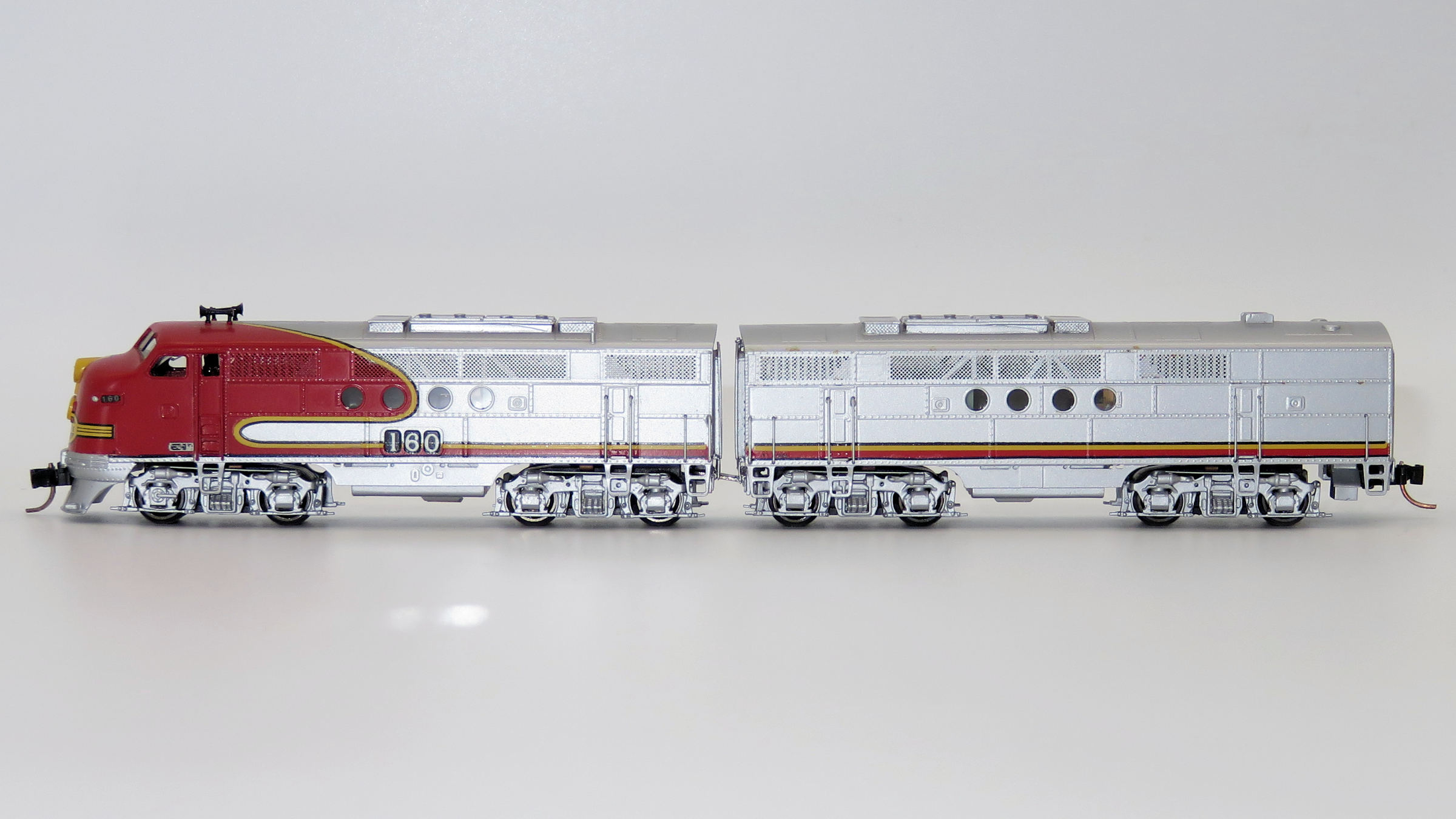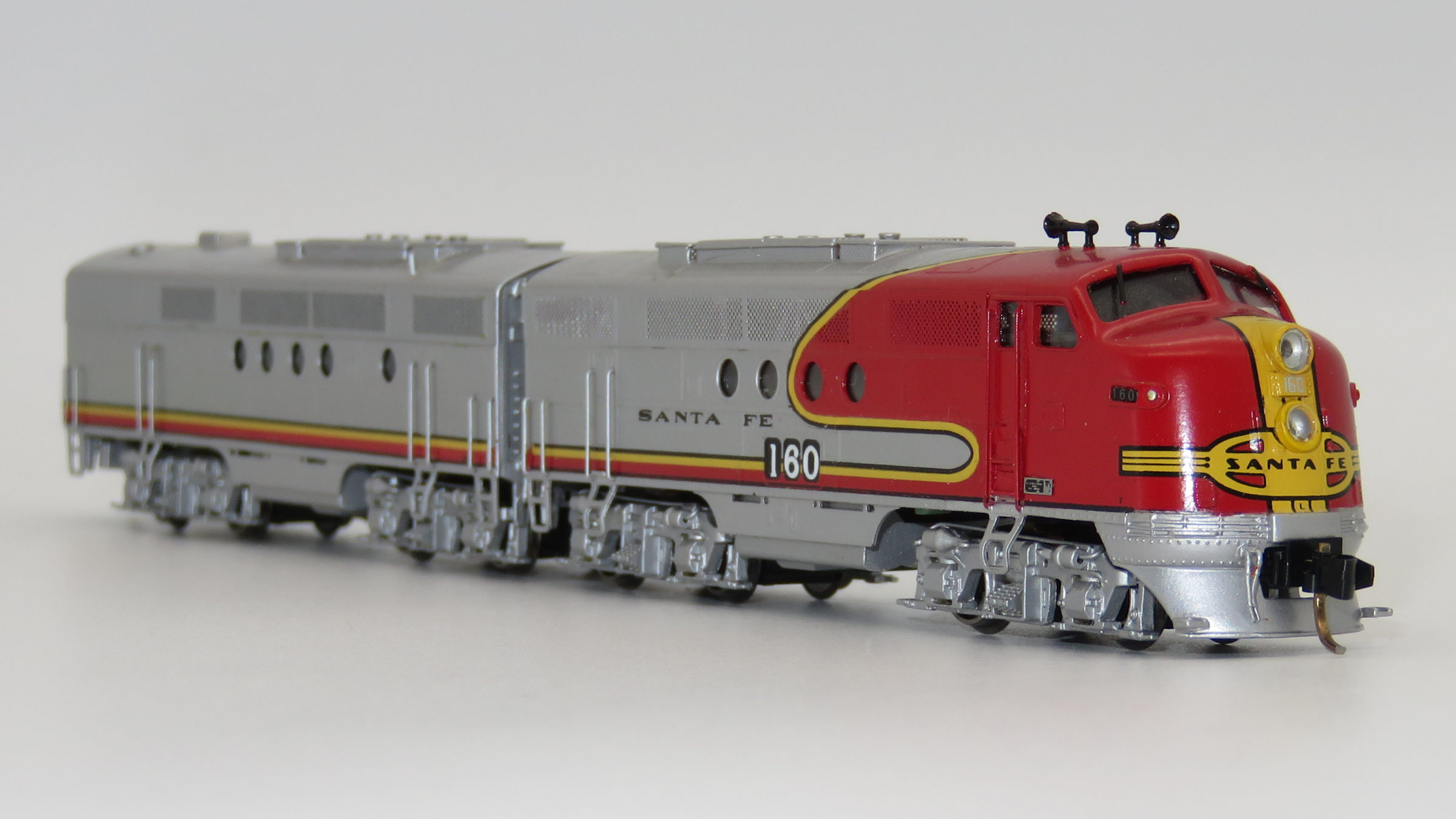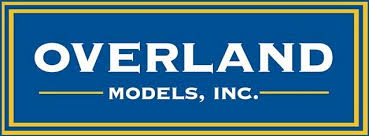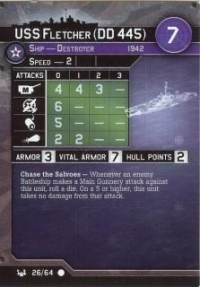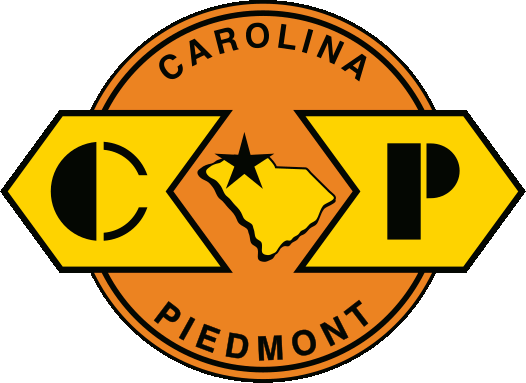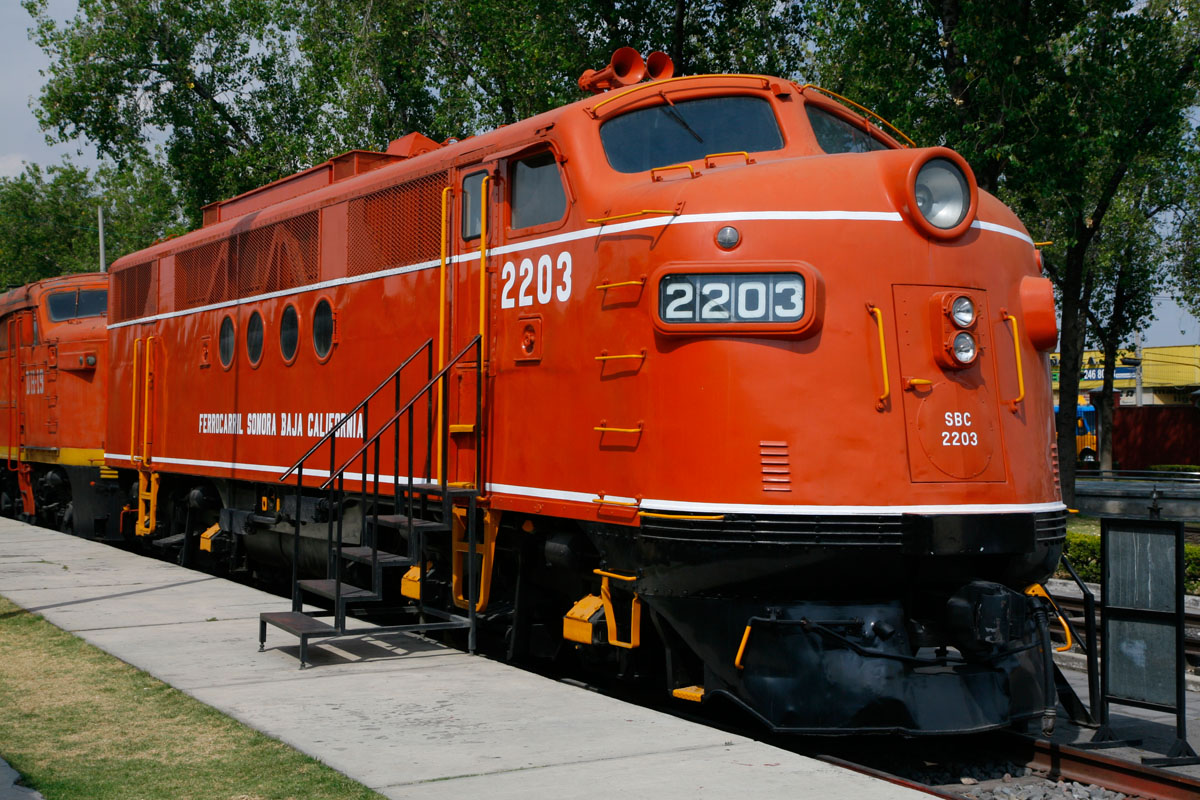Specific Item Information: Brass Shell. A Unit and B Unit are connected by a drawbar. A Unit is equipped with a directional headlight.
Prototype History: The EMD FT was a 1,350-horsepower (1,010 kW) diesel-electric locomotive produced between March 1939 and November 1945, by General Motors' Electro-Motive Division. The "F" stood for 1400 horsepower (rounded from 1350) and the "T" for twin, as it came standard in a two-unit set. The design was developed from the TA model built for the C,RI&P in 1937, and was similar in cylinder count, axle count, length and layout. All told 555 cab-equipped A units were built, along with 541 cabless booster B units, for a grand total of 1,096 units. The locomotives were all sold to customers in the United States. It was the first model in EMD's very successful F-unit series of cab unit freight diesels, and was the locomotive that convinced many U.S. railroads that the diesel-electric freight locomotive was the future. Many rail historians consider the FT one of the most important locomotive models of all time.
The first units produced for a customer were built in December 1940 and January 1941 for the Atchison, Topeka and Santa Fe Railway and numbered the 100 set. These were the first diesel-electric locomotives ever produced with dynamic braking, a system developed at the insistence of the railroad and with its assistance. Initially the four-unit, coupler-equipped set featured two booster units between two cab units in the manner of the demonstrator set. The Brotherhoods of Locomotive Engineers and Firemen, however, insisted that the two cabs required two crews, so the railway had EMD produce extra boosters, and renumbered its earliest sets into four unit sets with one cab unit and three boosters. Negotiation with the unions soon rectified the situation, but as the road's earliest units were geared for higher speeds than subsequent units, these sets continued to be composed of one FTA cab unit and three FTB boosters. This is why the road had ten more FTB booster units than FTA cab units.
From Wikipedia
The first units produced for a customer were built in December 1940 and January 1941 for the Atchison, Topeka and Santa Fe Railway and numbered the 100 set. These were the first diesel-electric locomotives ever produced with dynamic braking, a system developed at the insistence of the railroad and with its assistance. Initially the four-unit, coupler-equipped set featured two booster units between two cab units in the manner of the demonstrator set. The Brotherhoods of Locomotive Engineers and Firemen, however, insisted that the two cabs required two crews, so the railway had EMD produce extra boosters, and renumbered its earliest sets into four unit sets with one cab unit and three boosters. Negotiation with the unions soon rectified the situation, but as the road's earliest units were geared for higher speeds than subsequent units, these sets continued to be composed of one FTA cab unit and three FTB boosters. This is why the road had ten more FTB booster units than FTA cab units.
From Wikipedia
Road Name History: The Atchison, Topeka and Santa Fe Railway (reporting mark ATSF), often abbreviated as Santa Fe or AT&SF, was one of the larger railroads in the United States. Chartered in February 1859, the railroad reached the Kansas-Colorado border in 1873 and Pueblo, Colorado, in 1876. To create a demand for its services, the railroad set up real estate offices and sold farm land from the land grants that it was awarded by Congress. Despite the name, its main line never served Santa Fe, New Mexico, as the terrain was too difficult; the town ultimately was reached by a branch line from Lamy.
The Santa Fe was a pioneer in intermodal freight transport, an enterprise that (at one time or another) included a tugboat fleet and an airline (the short-lived Santa Fe Skyway). Its bus line extended passenger transportation to areas not accessible by rail, and ferryboats on the San Francisco Bay allowed travelers to complete their westward journeys to the Pacific Ocean. The ATSF was the subject of a popular song, Harry Warren & Johnny Mercer's "On the Atchison, Topeka and the Santa Fe", written for the film, The Harvey Girls (1946).
The railroad officially ceased operations on December 31, 1996, when it merged with the Burlington Northern Railroad to form the Burlington Northern & Santa Fe Railway.
Read more on Wikipedia.
The Santa Fe was a pioneer in intermodal freight transport, an enterprise that (at one time or another) included a tugboat fleet and an airline (the short-lived Santa Fe Skyway). Its bus line extended passenger transportation to areas not accessible by rail, and ferryboats on the San Francisco Bay allowed travelers to complete their westward journeys to the Pacific Ocean. The ATSF was the subject of a popular song, Harry Warren & Johnny Mercer's "On the Atchison, Topeka and the Santa Fe", written for the film, The Harvey Girls (1946).
The railroad officially ceased operations on December 31, 1996, when it merged with the Burlington Northern Railroad to form the Burlington Northern & Santa Fe Railway.
Read more on Wikipedia.
Brand/Importer Information: Since 1976, Overland Models has been a premier importer of fine brass scale models. The company’s new ownership, having passed from father to son, is steeped in the family’s passion for and knowledge of model railroads. We are dedicated to OMI’s tradition of quality, service and attention to detail, and are taking bold steps to introduce new models and features to delight the most discerning collector and hobbyist.
Our devotion to accuracy of detail is a hallmark of our products. We not only have a historical in-house library for reference, our project team also goes on-site to take measurements, photos and talk with railroad and other employees. We also maintain excellent relationships with manufacturers who know that we pride ourselves on maintaining the highest integrity in representing their product. And our relationships extend to our customers, many of whom offer railroad experience and knowledge from which our models are designed and refined.
Our products are handcrafted by some of the world’s foremost manufacturers of detailed brass models using our exact specifications. The models are beautifully factory finished for the most authentic representation possible. Our models now feature NMRA-compliant DCC plugs so that customers can install the decoder of their choice.
These combined resources and our commitment to quality make Overland Models the most realistic, highly collectible models you can own.
Our devotion to accuracy of detail is a hallmark of our products. We not only have a historical in-house library for reference, our project team also goes on-site to take measurements, photos and talk with railroad and other employees. We also maintain excellent relationships with manufacturers who know that we pride ourselves on maintaining the highest integrity in representing their product. And our relationships extend to our customers, many of whom offer railroad experience and knowledge from which our models are designed and refined.
Our products are handcrafted by some of the world’s foremost manufacturers of detailed brass models using our exact specifications. The models are beautifully factory finished for the most authentic representation possible. Our models now feature NMRA-compliant DCC plugs so that customers can install the decoder of their choice.
These combined resources and our commitment to quality make Overland Models the most realistic, highly collectible models you can own.
Item created by: klausnahr on 2022-06-14 14:12:32. Last edited by klausnahr on 2022-09-27 04:46:08
If you see errors or missing data in this entry, please feel free to log in and edit it. Anyone with a Gmail account can log in instantly.
If you see errors or missing data in this entry, please feel free to log in and edit it. Anyone with a Gmail account can log in instantly.


